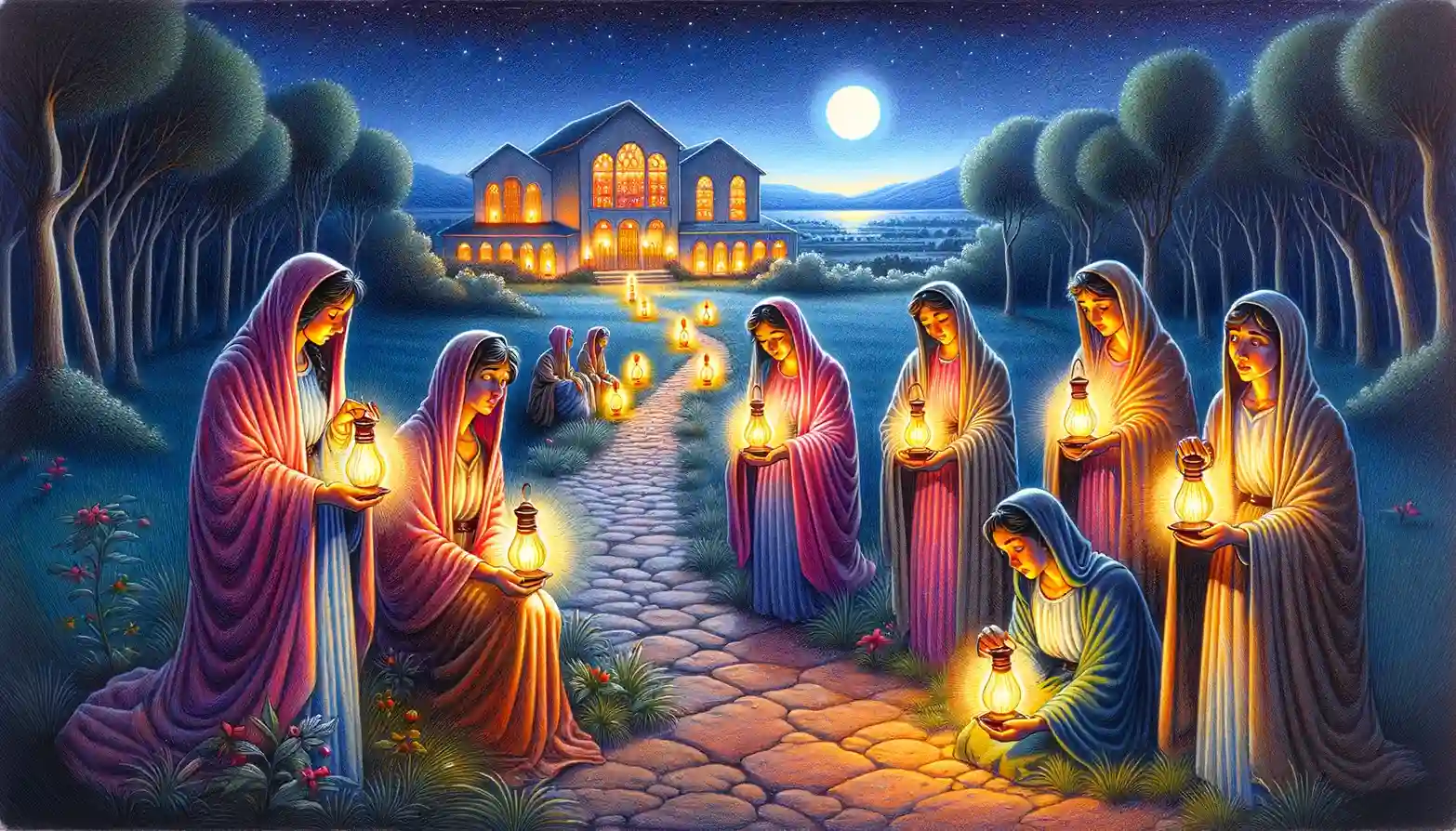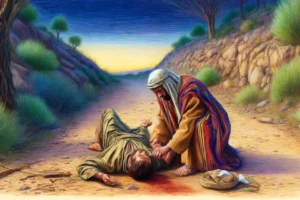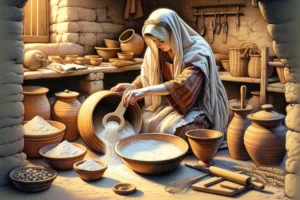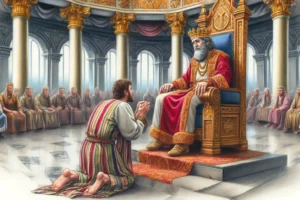
The Parable of the Ten Virgins
Here are some quick facts about the Parable of the Ten Virgins, as found in Matthew 25:1-13:
- Setting: This parable is part of Jesus’ teachings on the Mount of Olives, specifically addressing the need for readiness for the Kingdom of Heaven.
- Characters: The parable features ten virgins who took their lamps and went to meet the bridegroom; five of them were wise and brought extra oil, while the other five were foolish and did not.
- Main Event: The bridegroom’s arrival was delayed, causing all the virgins to fall asleep. At midnight, a cry announced his arrival, prompting all virgins to prepare their lamps.
- Key Issue: The foolish virgins’ lamps were going out because they had no extra oil. They asked the wise virgins for oil, who refused, suggesting they go to buy their own.
- Climax: While the foolish virgins were away buying oil, the bridegroom arrived. The wise virgins who were prepared went in with him to the wedding banquet, and the door was shut.
- Lesson: The parable concludes with Jesus warning, “Therefore keep watch, because you do not know the day or the hour.”
- Interpretation: The parable is commonly interpreted as a call to spiritual preparedness and vigilance, emphasizing the importance of being ready for the coming of Christ and the final judgment.
- Theological Significance: It highlights themes of readiness, wisdom, and the unexpected nature of significant spiritual events, aligning with eschatological teachings about the end times.
The Parable of the Ten Virgins, found in Matthew 25:1-13, serves as a profound allegory concerning spiritual preparedness and vigilance in anticipation of Christ’s Second Coming. This parable is rich with symbolism and theological nuance, inviting a deeper understanding of Christian eschatology and personal accountability. Here’s a comprehensive analysis:
Context within Matthew’s Gospel
This parable is part of a series of teachings by Jesus about watchfulness and readiness, which are delivered during His final discourse on the Mount of Olives. These teachings are particularly aimed at instructing His followers about their conduct in the interim before His expected return. The parable specifically follows the eschatological discourse in Matthew 24, where Jesus discusses the signs of the end times and the importance of being alert.
Elements and Symbolism
- Virgins: The ten virgins represent professed members of the Church, implying a community awaiting the return of Christ, likened to a bridegroom.
- Lamps and Oil: Lamps symbolize the light of faith or works that shine outwardly. Oil, on the other hand, often represents internal spiritual readiness and the Holy Spirit, which fuels and sustains genuine faith.
- Wise and Foolish Virgins: The distinction between the wise and foolish virgins underscores the difference between those who are merely nominal in their faith and those who genuinely live by it. The wise virgins not only profess faith but maintain it diligently through a sustained relationship with God, symbolized by their reserve of oil.
Narrative Analysis
The narrative structure builds tension by introducing an unexpected delay of the bridegroom, a common biblical motif representing the unpredicted timing of the Second Coming. As all virgins fall asleep—a nod to human frailty and the universal challenge of maintaining constant vigilance—the crisis erupts at midnight, a traditional metaphor for uncertainty and the climax of eschatological expectation.
The wise virgins are prepared with extra oil, contrasting sharply with the foolish virgins who find themselves lacking. This moment of crisis illustrates the parable’s central theme: spiritual readiness cannot be borrowed or acquired at the last moment. Each individual’s relationship with God must be personally cultivated and maintained.
Theological Implications
The closing of the door by the bridegroom after his arrival, which barred the foolish virgins from the wedding feast, serves as a stern warning about the finality of divine judgment. The refusal of the wise virgins to share their oil highlights that certain aspects of spiritual preparedness are non-transferable and must be personally secured before the end times.
Conclusion and Moral of the Story
Jesus concludes the parable with a direct admonition to “keep watch,” emphasizing that the time of His return is unknown. This parable thus functions as both a caution and encouragement: a caution against spiritual lethargy and an encouragement to maintain an active and prepared faith life.
The Parable of the Ten Virgins teaches that in the face of the ultimate, unforeseeable event of Christ’s return, the true state of one’s faith will be revealed. It invites believers to introspect their spiritual readiness and to live in a state of continual preparation, echoing the broader scriptural call to live righteously and vigilantly in anticipation of the eschaton.



